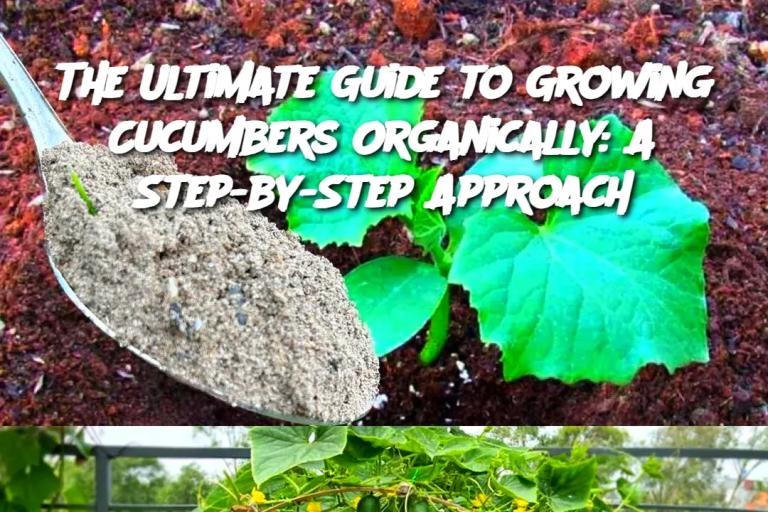ADVERTISEMENT
Introduction:
Cucumbers are a versatile, refreshing vegetable that thrives in organic gardens. Whether you want to add them to salads, make homemade pickles, or enjoy them as a crunchy snack, growing cucumbers organically is a rewarding experience. This guide provides everything you need to know to cultivate healthy cucumbers in your garden, from selecting the right variety to organic pest control methods. Let’s dive into the world of cucumber cultivation!
Ingredients:
Cucumber seeds (Choose an organic variety that suits your climate)
Well-draining soil
Compost or organic fertilizer
Mulch (like straw, grass clippings, or leaves)
Organic pest control options (neem oil, garlic spray, or companion plants like marigolds)
Trellis (for vertical gardening)
Instructions:
Choose the Right Variety: Start by selecting cucumber seeds suited for your region’s climate. Popular organic cucumber varieties include 'Marketmore', 'Straight Eight', and 'Cucamelon.' Determine whether you want slicing cucumbers, pickling varieties, or both.
Prepare the Soil: Cucumbers need rich, loamy, well-draining soil to thrive. Amend your garden soil with organic compost to boost its nutrient content. The soil pH should be between 6.0 and 7.0 for optimal growth.
Plant the Seeds: Directly sow the seeds in the soil when temperatures are consistently above 60°F (15°C). Plant the seeds about 1 inch deep and 6 inches apart. If you’re planting multiple rows, space them 3 feet apart to allow ample airflow.
Provide Support: Cucumbers grow best with support, so use a trellis, fence, or other vertical structures to keep them off the ground. This reduces the risk of disease and allows the plants to produce more fruit.
Water and Mulch: Keep the soil consistently moist, but avoid over-watering. Cucumbers need around 1-2 inches of water per week. Mulch around the base of the plants to retain moisture, suppress weeds, and regulate soil temperature.
Fertilize Organically: Use organic compost or a natural, slow-release fertilizer to feed your cucumber plants every 3-4 weeks. Too much nitrogen can lead to excessive leaf growth at the expense of fruit production, so balance is key.
Monitor for Pests and Diseases: Organic cucumber plants are susceptible to pests like aphids, cucumber beetles, and powdery mildew. Use organic pest control methods like neem oil, or introduce natural predators like ladybugs. Rotate crops annually to prevent soil-borne diseases.
Harvesting: Cucumbers typically take about 50-70 days to mature, depending on the variety. Harvest cucumbers when they are firm, green, and fully grown, but before they start turning yellow. Regular harvesting encourages the plant to produce more fruit.
Serving and Storage Tips:
Serving: Fresh cucumbers can be eaten raw in salads, sandwiches, or dipped in hummus. For a refreshing snack, slice them and sprinkle with a little sea salt.
Storage: To keep cucumbers fresh, store them in the fridge. They last about a week when kept in the crisper drawer. If you have an abundance, try pickling them or preserving them in jars.
Variations:
ADVERTISEMENT
